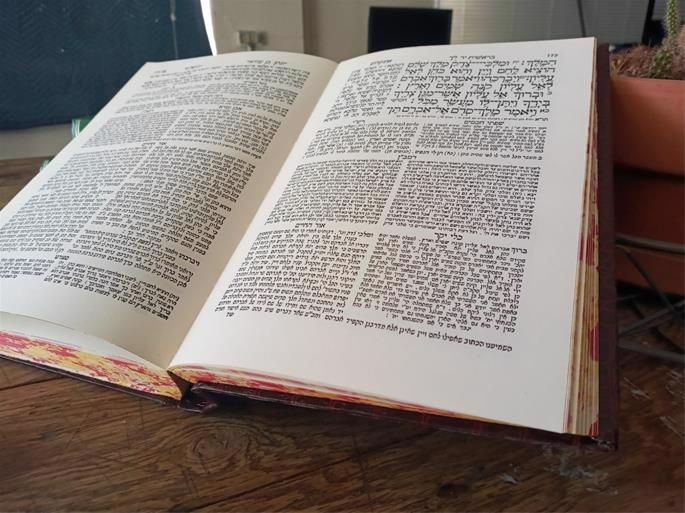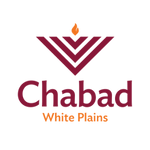The Five Books of Moses, also known as the Pentateuch, are the foundational work of Judaism. Dictated by G‑d and transcribed by Moses, these books chronicle the formation of the Jewish nation and convey G‑d’s instructions on how we can fulfill our life’s mission. Read on for 17 facts about the most important work ever written.
1. They Are Handwritten on Parchment
The Five Books of Moses form the text of the Torah scrolls kept in the ark of each synagogue. Each scroll contains 304,805 letters meticulously handwritten by a scribe using a feather quill dipped in ink, a painstaking task that takes many months to complete. The specific Hebrew script used in a Torah scroll is known as ktav Ashurit, with each letter following the precise specifications delineated by Jewish law.1
Read: What Is a Torah Scroll?
2. In Hebrew They’re Called “Torah” or “Chumash”
In Hebrew, the Five Books of Moses are known as Chamishah Chumshei Torah, “The Five Sections of the Torah.” However, this full name is rarely used in everyday conversation. More commonly, people refer to it simply as “Torah” or “Chumash.”
“Torah” is most often used when it is in handwritten scroll format, and “Chumash” refers to the printed book form, used for individual study.
3. They Were Written by Moses …
The Pentateuch was recorded by Moses in segments over the course of the Jews’ 40-year journey from Egypt to the Promised Land. According to an alternative tradition, the content of the 5 books remained oral during that time, and was first committed to writing during Moses’ final days.2
Who wrote the last 8 verses of Deuteronomy, which describe Moses’ death? The Talmud records two traditions: either it was Moses, to whom G‑d foretold what would soon take place, or it was his student Joshua.3
4. … But Authored by G‑d
Moses may have been the transcriber, but he was not the author: every word in the Pentateuch was dictated by G‑d Himself.4 To quote Maimonides, claiming that Moses added a single verse of his own, or even a single word, is a denial of the Torah’s authenticity.5
Read: 17 Facts About Moses
5. Every Nuance Is Precise
In light of the Torah’s Divine authorship, it comes as no surprise that every detail is perfect and exact. Jewish scholars throughout history have extrapolated laws and lessons based on the choice or sequence of the Torah’s wording, and even from the addition or omission of single letters.6 In fact, the Talmudic sage Rabbi Akiva is said to have deduced multitudes of laws from the little “crowns” positioned on the letters.7
6. They Are One of Three
The Five Books of Moses are:
- Bereishit (Genesis)
- Shemot (Exodus)
- Vayikra (Leviticus)
- Bamidbar (Numbers)
- Devarim (Deuteronomy)
Together, they form one of the three parts of the Bible (Tanakh in Hebrew). The other two parts are Prophets (8 books) and Scriptures (11 books), making a total of 24 books in the Bible.
Study the Tanakh with English Translation
7. They Contain 613 Mitzvahs
The defining feature of the first 5 books can be gleaned from their name, “Torah,” which means instruction. The 613 mitzvahs, G‑d’s master plan on how we should live our lives and fulfill the purpose of existence, are found exclusively in the Five Books of Moses.8
Learn how to do the mitzvahs
8. They Chronicle the First 2488 Years of History
In addition to the mitzvahs, the Five Books of Moses describe the creation of the universe and the first two-and-half millennia of history. Special emphasis is placed on the stories of our forefathers, Abraham, Isaac, and Jacob, and the events that shaped the Jewish nation: the Egyptian exile, the Exodus, and the giving of the Torah at Mt. Sinai. But don’t be fooled: Far from providing mere historical information, each narrative contains countless lessons as relevant today as when they first occurred.
9. Scribes Include Moses, Ezra, and Maimonides
The skill of writing the Pentateuch on parchment is not one mastered easily. Scribes must undergo intense study and training to qualify for the demanding task. Over the ages, scribes of Torah scrolls (as well as tefillin and mezuzahs) occupied a place of honor within each Jewish community. The first scribe was Moses, who wrote 13 Torah scrolls on the day of his passing.9 Other notable scribes include Ezra, whose Torah scroll was kept in the Temple throughout the Second Temple period;10 Maimonides, who details how he wrote his scroll in his magnum opus, the Mishneh Torah;11 Rabbi Meir of Rothenberg;12 and Rabbi Moshe Isserles.
Read: Sofer: The Torah Scribe
10. The Printed Version Is a Synagogue Staple

In addition to its handwritten format, the Pentateuch is one of the most popular printed books of all time, published in hundreds of editions in multiple languages. You can be sure to find many copies of the Chumash on the shelves of your local synagogue. Although "Chumash" technically refers to each of the individual books (e.g., Chumash Bereishit, Chumash Shemot, etc.), it is often used to refer to the collective unit as well.
Far from being limited to synagogues and study halls, a Chumash is a staple of every Jewish home.
Read: What Does Chumash Mean?
11. There Are Hundreds of Commentaries
The Torah is the basis of hundreds if not thousands of commentaries, starting from age-old ones such as Rashi, Nachmanides, and Ibn Ezra, and culminating with new ones being authored as you read this article. Analyzing the text from numerous angles, they share the common goal of uncovering the endless layers of meaning in the sacred text and channeling its messages to the minds and hearts of each generation.
12. Translations Date Back to Antiquity
One of the earliest Torah translations is in Aramaic, rendered by Onkelos the Convert in the 2nd century CE, featured alongside the original text in many publications of the Chumash. Other notable early translations include the Greek translation commissioned by King Ptolemy of Egypt in the 3rd century BCE, and (turning the clock ahead a millennium) the Arabic translation of Rabbi Saadia Gaon from the early 10th century.
Read: What Is the Septuagint?
13. Oldest Manuscripts Among Dead Sea Scrolls

The earliest extant manuscripts of the Five Books of Moses form a significant portion of the famous collection known as the Dead Sea Scrolls. About 100 fragments representing each of the five books were found, including 33 pieces from Deuteronomy alone. This ancient treasure trove is approximately 2,000 years old.
Another famous manuscript copy of the Torah (along with the rest of the Tanakh) is the Aleppo Codex, written in the 10th century and famous for its accuracy. Used by Maimonides13 and many other influential figures, it is currently kept in the Israel Museum in Jerusalem.
14. They’re Read Four Times a Week (or More)
In the Jewish synagogue service, the Torah scroll is removed from the ark and read aloud twice every Shabbat, during the morning and afternoon services. It is also read every Monday and Thursday, as well as on Rosh Chodesh (the beginning of the Jewish month), on fast days, and on all major holidays. The entire text of the Pentateuch is thus completed once a year.
Read: The Torah Reading
15. The Reading Is Melodious
If you’ve heard the Torah reading in a synagogue, you know that far from being monotonous, it is read following a specific tune, known as ta’amim in Hebrew or trop in Yiddish. The melody is indicated by cantillation marks located beneath or above the words of the text in the printed editions of the Chumash. These marks double as punctuation, indicating where verses end and where to pause within each verse. While the cantillation marks are universal, the melody is not: Ashkenaz, Sephardi, and Yemenite traditions differ in how the words are both pronounced and sung.
16. They Are Divided Into Weekly Portions
The Five Books of Moses are divided into 53 weekly segments.14 Each segment is called a sidra or parshah and is associated with a specific week of the year. It is the weekly parshah that is read from the Torah scroll on Monday, Thursday, and Shabbat. Additionally, many Jews study part of the weekly parshah every day, often with the commentary of Rashi. In addition to the tremendous value of constantly reviewing the most fundamental text of our faith, a Jew “lives” with the weekly Torah portion, looking to it for guidance and inspiration for that week and beyond.
Study the Weekly Parshah
17. They Are the Basis of All of Jewish Scholarship
Over the ages, Jewish literature has expanded to fill thousands upon thousands of volumes, including the Talmud, Midrash, Zohar, and many more. However, the source of every piece of Jewish scholarship up to today can be traced back to the timeless Divine words of the Five Books of Moses, the seminal and most important work of Judaism of all times.







Join the Discussion